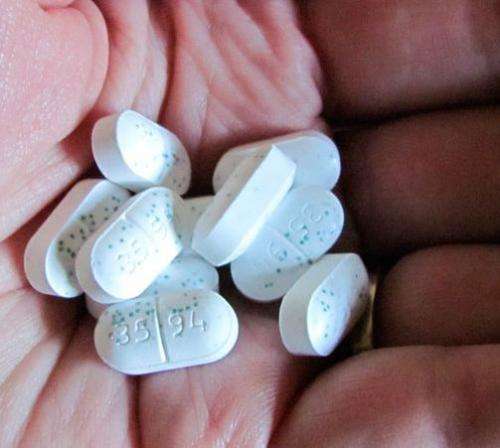Prescribing patterns change following direct marketing restrictions

A study of how policies restricting pharmaceutical promotion to physicians affect medication prescribing found that physicians in academic medical centers (AMCs) prescribed fewer of the promoted drugs, and more non-promoted drugs in the same drug classes, following policy changes to restrict marketing activities at those medical centers. The analysis encompassed 16.1 million prescriptions; while the decline observed was modest in terms of percentage, proportionally small changes can represent thousands of prescriptions.
The study was supported in part by a contract from the National Institute of Mental Health (NIMH), part of the National Institutes of Health. The paper reporting these results appears in the May 2 issue of JAMA which is devoted to conflict of interest issues.
It is common for pharmaceutical companies to promote medications to physicians during sales visits and events that may involve gifts such as meals and free samples, a practice called "detailing." In recent years, some AMCs in the United States have instituted policies restricting detailing, but little is known about what effect, if any, such policies have had on prescribing practices by physicians.
"There has long been concern that drug marketing to physicians might influence their prescribing, including—and maybe especially—for psychiatric drugs," says Michael Schoenbaum, Ph.D., Senior Advisor for Mental Health Services, Epidemiology, and Economics, Division of Services and Intervention Research at NIMH and a coauthor of the paper. "Many medical schools have adopted policies to limit such marketing, and this study is one of the first to document what effect these policies actually have. Important next steps include assessing the economic impact of these policies and whether they affect patients' clinical outcomes."
Ian Larkin, Ph.D., at the University of California, Los Angeles, and George Lowenstein, Ph.D., at Carnegie Mellon University, Pittsburgh, led a multi-center team of researchers in a study examining the effects on prescribing of AMC policies to limit pharmaceutical representative detailing. The team looked at prescribing by physicians affiliated with 19 academic medical centers in five states. These states—California, Illinois, Massachusetts, New York, and Pennsylvania—have the largest numbers of AMC-affiliated physicians and in 2015 accounted for nearly 35 percent of all U.S. prescriptions.
During the period of the study—January 2006 to June 2012—these 19 centers instituted policies restricting detailing. The study compared prescribing by 2,126 physicians affiliated with these centers with that of 24,593 physicians with similar backgrounds and prescribing habits that were selected from a database of physicians in the same states provided by a large pharmacy benefits manager. The analysis in this study encompassed eight major drug classes: lipid-lowering drugs, gastroesophageal reflux disease drugs, antidiabetic agents, antihypertensive drugs, sleep aids, attention deficit hyperactivity disorder drugs, antidepressant drugs, and antipsychotic drugs.
The study authors reported changes in prescribing in terms of changes in the market share of detailed and nondetailed drugs: market share represents the share of prescriptions for a given drug within a drug class. The mean market share of detailed drugs (across all the drug classes) in AMCs prior to changes in policy was 19.3 percent. Over the period of the study, the market share of detailed drugs prescribed by AMC physicians declined by 1.67 percentage point, an 8.7 percent decrease relative to the level prior to policy changes. The market share of prescribed nondetailed drugs increased 0.84 percentage point, or a relative 5.6 percent increase. The changes were statistically significant for six of the eight drug classes and for all drugs in the aggregate. The decline in prescribing of detailed drugs among AMC physicians was in contrast to a slight decline in prescriptions of detailed drugs among the comparison group of physicians over the same time period.
The magnitude of changes differed across AMCs. The decline in prescriptions of detailed drugs was greatest at centers with the most stringent policies, such as bans on salespeople in patient care areas, requirements for salesperson registration and training, and penalties for salespeople and physicians for violating the policies. In 8 of 11 AMCs with more stringent policies, the changes in prescribing were significant; in only 1 of 8 AMCs with more limited measures were the changes significant.
Additional analysis showed that the changes in prescribing were evident whether or not detailed drugs for which a generic version became available during the study were included in the data. Also, because AMCs instituted policy changes at different times during the study period, the authors compared prescribing during equivalent stretches of time (up to three years) immediately before and after each center's policy had changed.
More information: JAMA (2017). jamanetwork.com/journals/jama/ … .1001/jama.2017.4039

















